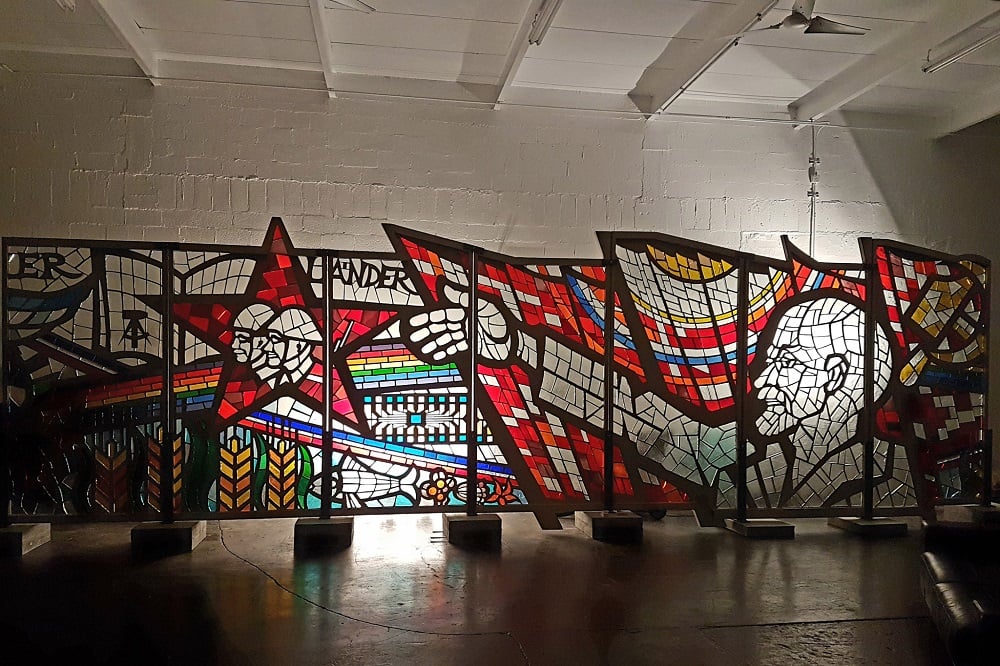
A German art historian has discovered a huge work in stained glass, previously installed in the Stasi (secret police) headquarters in former East Berlin and is staging a pop up exhibition during Art Basel Miami Beach with the intention of selling the work for $21.4 million.
Thilo Holzmann discovered the work among his uncle’s possessions, who had bought the 65-foot wide stained-glass piece in 1990, one year after the fall of the Berlin Wall and the end of the division between East and West Germany. Weighing three tons, the work had been stored away in a shipping container and simply forgotten about.
The screen was designed by Richard Otfried Wilhelm, now 84, who was the chief master of glass for public works in the German Democratic Republic (GDR) and was commissioned in 1979 by Erich Mielke, the head of the East German Ministry of State Security, to be installed in the Stasi headquarters.
A major assignment for Wilhelm, “…it was crucial that it be both artistically outstanding and politically powerful,” he told the New York Times.
The huge screen stood in a large room at the headquarters that is now the Stasi Museum. It depicts Lenin and flying doves, a common symbol used by the communist regime. It was a huge undertaking that involved 16 glaziers and took two years to complete.
The pop-up exhibition will be held at an undisclosed location, running concurrently with Art Basel Miami Beach, which takes place from December 1-4.
“What struck me as odd is that it was in the Stasi headquarters and that there is no specific reference to the secret work, intelligence activities or the conspiracies which they indulged in,” the seller, Holzmann, told NYT. “That would make it more valuable,” he added.
However, despite the obvious intrigue surrounding the screen, experts are not convinced that is worth the millions Holzmann is asking for it.
“The quality of this piece is certainly not exceptional from an artistic point of view,” Sjeng Scheijen, an associate researcher at Leiden University and curator of Soviet art, told NYT.
Although he did indicate that it could open up a market these commonly made glass works: “If they will sell it for this price, you will see a storm of the same kind of art coming on the market, because many of these kinds of stained glass windows are very often in buildings from the ’70s and ’80s that aren’t used anymore.”